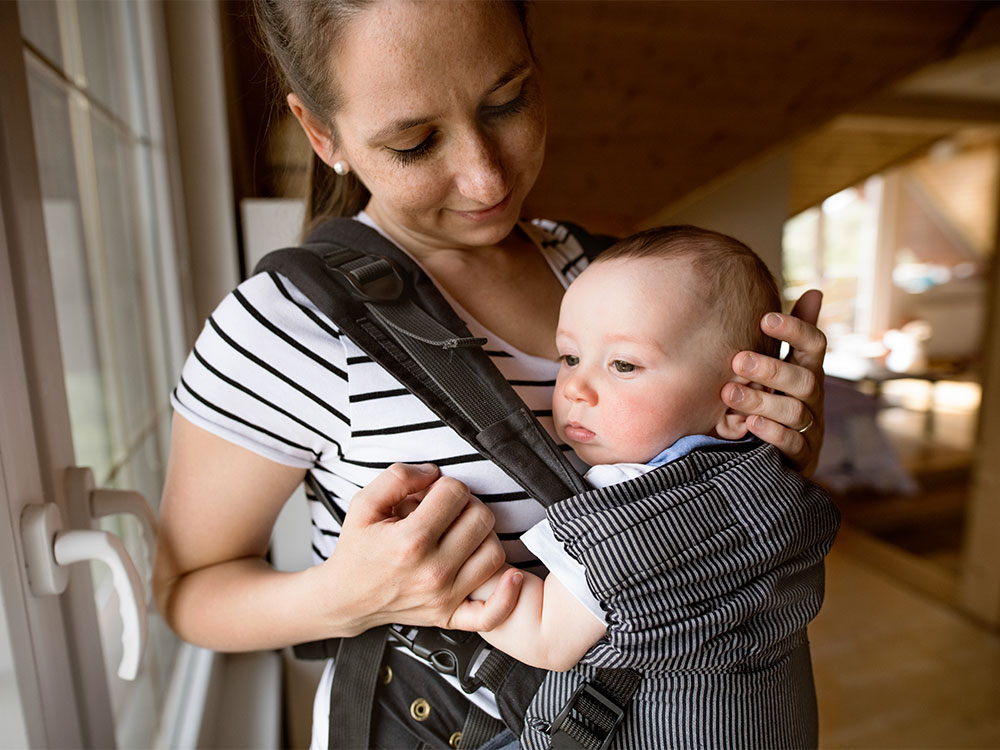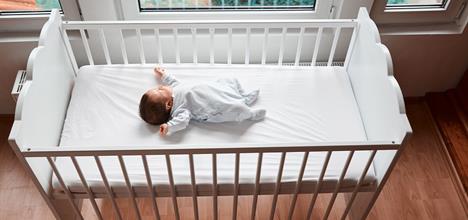How Long Can Baby Be in Carrier: The Essential Guide
A baby can be in a carrier for up to one hour at a time, according to experts. It is not recommended for babies to be in a carrier for several hours due to potential risks such as suffocation, overheating, and hip dysplasia.
Carrying a baby in a wide-based, ergonomic sling that supports their natural position is beneficial for their physiological development. As long as the baby is comfortable and the carrier supports them in a spread squat position, there is no set time limit for how long they can stay in the carrier.
However, it is important to ensure the baby is not motionless in the same position for extended periods.
Safety Recommendations For Carrying Baby In A Carrier
It is recommended to limit the time a baby spends in a carrier to one hour at a time. Extended periods may pose safety and developmental risks such as suffocation, positional asphyxiation, overheating, hip dysplasia, and container syndrome. Prioritize your baby’s safety and well-being by following these guidelines.
Proper Positioning And Support For The Baby’s Spine And Hips
When carrying your baby in a carrier, it is crucial to ensure proper positioning and support for their spine and hips. This helps promote healthy development and prevents any discomfort or potential injuries. To achieve proper positioning:
- Ensure that your baby’s spine is in a natural C-shaped curve, with their head and neck supported.
- Make sure their hips are spread apart in a “M” or “frog-legged” position, with their knees higher than their bottom.
- Ensure that their legs are not dangling straight down, as this can place unnecessary strain on their hips and spine.
Following The Manufacturer’s Guidelines For Weight And Age Restrictions
Each baby carrier has specific weight and age restrictions set by the manufacturer. It is important to carefully follow these guidelines to ensure the safety and well-being of your baby. These guidelines consider the carrier’s design and functionality, as well as the physical development of your baby.
- Check the weight restrictions and make sure your baby falls within the specified range.
- Take note of any age restrictions mentioned by the manufacturer.
- Always consult the instruction manual provided by the manufacturer for any additional safety recommendations specific to the carrier.
Regularly Checking For Signs Of Discomfort Or Distress
While carrying your baby in a carrier, it is essential to constantly monitor for any signs of discomfort or distress. Your baby’s well-being is the top priority, and addressing their needs promptly ensures a safe and comfortable experience. Watch out for:
- Fussiness or excessive crying
- Redness or marks on their skin
- Changes in breathing or difficulty breathing
- Discoloration of the lips or face
- Unusual body positioning or discomfort
If you notice any of these signs, immediately remove your baby from the carrier and check for the cause of their discomfort. It could be due to improper positioning, a need for a diaper change, hunger, or any other discomfort they may be experiencing. Remember, the safety and comfort of your baby are paramount.
Duration Guidelines For Carrying Baby In A Carrier
When it comes to carrying your baby in a carrier, understanding the recommended time limits is essential for both their comfort and development. While there is no official time limit for how long a baby can be in a carrier at a time, there are several factors to consider when determining the duration. These factors include the baby’s age, needs, and overall safety. By following these guidelines and gradually increasing the time spent in a carrier, you can ensure the utmost safety and well-being for your little one.
Understanding The Recommended Time Limits For Baby’s Comfort And Development
Babies thrive on close physical contact with their caregivers. Being carried in a carrier provides a sense of security and allows for bonding between the parent and the baby. However, it is important to note that carrying a baby in a carrier for an extended period can have its drawbacks.
Dr. Fisher, a prominent pediatrician, suggests limiting periods in the carrier to about an hour at a time. This is not meant to be a position that the baby should be in for several hours. By adhering to this guideline, you can ensure that your baby remains comfortable and does not experience any discomfort or potential risks associated with being in the carrier for too long.
Factors To Consider When Determining The Duration, Such As Baby’s Age And Needs
When deciding how long your baby can stay in a carrier, it is crucial to take their age and individual needs into account. Newborn babies require more frequent breaks and feedings, while older babies may have longer stretches of awake time and may need to be taken out of the carrier for a change of scenery or to engage in other activities.
Babies’ developmental needs can also play a role in determining the duration. For example, younger babies may need to spend more time on their backs to develop their motor skills, while older babies may benefit from more time being held upright to strengthen their core muscles.
Ultimately, you should listen to your baby’s cues and make adjustments based on their comfort and well-being. If your baby becomes fussy or shows signs of discomfort, it may be a sign that they need a break from being in the carrier.
Tips For Gradually Increasing The Time Spent In A Carrier
Gradually increasing the time your baby spends in a carrier allows them to acclimate to the new position gradually. Here are some tips to help you gradually increase the duration:
- Start with short intervals: Begin by carrying your baby in the carrier for shorter intervals, such as 15-20 minutes, and gradually increase the time as they become more comfortable.
- Observe baby’s cues: Pay close attention to your baby’s cues and body language. If they seem content and relaxed, you can gradually extend the duration. However, if they show signs of discomfort or restlessness, it’s important to take them out of the carrier and give them a break.
- Take breaks for feeding and diaper changes: Babies have specific needs, including feeding and diaper changes. It’s important to schedule breaks during the carrier time to meet these needs.
- Engage in interactive activities: While your baby is in the carrier, engage in interactive activities such as singing, talking, or playing peek-a-boo. This helps keep them engaged and entertained, making the carrier experience more enjoyable for both of you.
By gradually increasing the time your baby spends in a carrier and considering their age, needs, and overall comfort, you can provide them with a safe and nurturing environment. Remember to always prioritize your baby’s well-being and adjust the duration accordingly.
The Impact Of Prolonged Carrying On Baby’s Development
Carrying your baby in a carrier for prolonged periods is not recommended, and it is best to limit the time to one hour at a time. This helps prevent risks such as suffocation, overheating, and hip dysplasia, while supporting their natural development.
Potential Risks Associated With Extended Periods In A Carrier
While using a baby carrier can offer numerous benefits for both the parent and the baby, it is important to be aware of the potential risks associated with prolonged periods in a carrier. Babies are delicate and their bodies are still growing and developing. Extended periods of time in a carrier can lead to various health concerns.
- Suffocation: Prolonged use of a carrier can potentially block a baby’s airways, increasing the risk of suffocation. It is crucial to ensure proper ventilation and the baby’s face is always visible and unobstructed.
- Positional asphyxiation: Incorrect positioning or slumping in a carrier can limit the baby’s ability to breathe properly, causing positional asphyxiation. It is important to check and adjust the baby’s positioning regularly to avoid this risk.
- Overheating: Carriers can cause babies to become overheated, especially in warmer weather or with prolonged physical contact. This can lead to dehydration and discomfort. Regular breaks and monitoring the baby’s temperature are important to prevent overheating.
- Hip dysplasia: Prolonged use of a carrier that does not support the baby’s hips and spine in the proper ergonomic position can contribute to hip dysplasia, a condition where the hip joint is not properly aligned. Choosing a carrier that supports the baby’s natural hip position is essential.
- Container syndrome: Extended time in a carrier can lead to a condition known as container syndrome, where the baby’s body maintains a fixed position that restricts movement and hampers overall physical development. Regular breaks and allowing the baby to move freely are important to prevent this.
Alternatives To Consider For Longer Outings Or Activities
While it is important to limit prolonged periods in a baby carrier, there are alternative options to consider for longer outings or activities when carrying the baby is necessary but not ideal. These alternatives can provide a balance between the baby’s need for physical contact and their desire for independent exploration.
- Stroller: Using a stroller can be a convenient option for longer outings. It allows the baby to observe the surroundings while still being safely secured. Choose a stroller that provides proper support for the baby’s head, neck, and back.
- Baby backpack: For outdoor activities or hikes, a baby backpack can be a great alternative. It allows the baby to enjoy the scenery, while giving the parent the freedom to move comfortably. Ensure the backpack is designed for proper weight distribution and offers sufficient support for the baby.
- Playpen: If the baby needs to be contained but still desires freedom to move and explore, a playpen can be a suitable option. It provides a safe environment for the baby to play and interact, while allowing the parent to attend to other tasks. Make sure the playpen is free from any hazards and adequately secured.
Balancing Baby’s Needs For Physical Contact And Independent Exploration
Finding the right balance between the baby’s needs for physical contact and independent exploration is essential for their overall development. While physical contact is crucial for bonding, emotional well-being, and establishing a sense of security, independent exploration promotes motor skills development and cognitive growth.
Parents can achieve this balance by incorporating a variety of activities and environments that allow for both physical contact and independent exploration. It’s important to provide opportunities for the baby to freely move, explore, and learn while ensuring regular periods of physical contact and nurturing.
Remember, every baby is unique, and their preferences may vary. Pay attention to your baby’s cues and adjust accordingly. By striking a balance between physical contact and independent exploration, you can support your baby’s overall development and foster their growing sense of independence.

Credit: raisingchildren.net.au
Strategies For Ensuring Baby’s Comfort In A Carrier
When it comes to how long baby can be in a carrier, it is recommended to limit periods to one hour at a time to ensure their comfort and safety. Carrying a baby in a wide-based, ergonomic sling supports their natural position and contributes to their physiological development.
Choosing the right carrier style and fit for your baby
When it comes to babywearing, choosing the right carrier style and fit is crucial for ensuring your little one’s comfort. There are various types of baby carriers available in the market, including wraps, slings, meh-dais, and structured carriers. Each style has its own unique features and benefits, so it’s important to consider your baby’s age, size, and your personal preference when making a decision. Here are a few factors to keep in mind:
- Consider the age and weight range that the carrier is suitable for.
- Ensure the carrier provides proper support for your baby’s head, neck, and spine.
- Check if the carrier allows for an ergonomic spread squat position, which is beneficial for your baby’s hip development.
- Make sure the carrier fabric is breathable and comfortable for both you and your baby.
Adjusting the carrier to ensure proper support and weight distribution
Proper adjustment of the carrier is essential for maintaining your baby’s comfort and safety. Whether you’re using a ring sling, a structured carrier, or a wrap, taking the time to adjust it correctly can make all the difference. Here are some tips for a secure and comfortable fit:
- Ensure the carrier is snug but not too tight. You should be able to fit two fingers between your baby and the carrier.
- Check that the shoulder straps are evenly distributed and don’t dig into your shoulders.
- Position your baby high enough on your chest so that you can easily kiss their head.
- Adjust the carrier’s waistband to sit comfortably on your hips, providing proper support for your baby’s weight.
- Make sure your baby’s legs are in a spread squat position with their knees higher than their bottom.
Recognizing signs of discomfort or overstimulation in your baby
While babywearing can be a wonderful bonding experience, it’s important to pay attention to your baby’s cues to ensure they are comfortable and not overstimulated. Here are some signs to watch out for:
- Fussiness or crying
- Excessive squirming or arching of the back
- Redness or marks on the skin
- Overheating or sweating
- Yawning or rubbing eyes
If you notice any of these signs, it’s important to take a break from babywearing and check if your baby needs feeding, a diaper change, or simply some quiet time in a calm environment.
Tips For Caring For Your Baby Carrier
To ensure your baby’s comfort and safety, it is recommended to limit their time in a carrier to around one hour at a time. This allows for proper positioning and prevents any potential risks associated with prolonged use. Remember to prioritize your baby’s well-being over extended periods of time in the carrier.
Cleaning And Maintaining Your Carrier For Optimal Hygiene And Durability
Keeping your baby carrier clean and well-maintained is essential for ensuring the safety and comfort of your little one. Here are some tips to help you clean and maintain your carrier for optimal hygiene and durability: – Regularly check the manufacturer’s instructions for cleaning your specific carrier model. Different materials may require different cleaning methods, so it’s important to follow their guidelines. – For carriers made of fabric, machine washing is usually recommended. Use a gentle cycle with cold water and mild detergent. Avoid using bleach or strong chemicals as they can damage the fabric and compromise the integrity of the carrier. – Hang your carrier to air dry after washing, as putting it in the dryer may cause the fabric to shrink or lose its shape. Ensure it is fully dry before storing it away to prevent mold or mildew. – If your carrier has removable inserts or accessories, such as head support pads or teething pads, wash them separately according to the manufacturer’s instructions. – Spot clean any stains or spills as soon as possible to prevent them from setting in. Use a mild detergent and a soft cloth or sponge to gently dab the affected area. Avoid scrubbing vigorously, as this may damage the fabric. – Regularly inspect your carrier for any loose threads, fraying, or signs of wear and tear. If you notice any damage, it’s important to repair or replace the carrier to maintain its safety and functionality.Checking For Wear And Tear To Ensure Continued Safety
Your baby’s safety is of utmost importance, and checking your carrier for wear and tear is crucial to ensure continued safety. Here are some key points to consider when inspecting your carrier: – Look for any visible signs of wear, such as fraying, loose stitching, or stretched fabric. These can weaken the carrier and compromise its ability to support your baby properly. – Check the buckles, straps, and fasteners for any signs of damage or weakness. Ensure that they are functioning properly and securely fastened before using the carrier. – Inspect the seams and connections where different parts of the carrier meet. Make sure they are intact and show no signs of stress or separation. – Pay attention to the condition of the padding and support in the carrier. Over time, foam inserts may lose their shape or become compressed, affecting the comfort and support for your baby. – If your carrier has adjustable straps or buckles, test them to ensure they can be adjusted smoothly and securely. Make sure they hold their position without slipping or loosening during use.Storing The Carrier Properly When Not In Use
Proper storage of your baby carrier when it’s not in use is important to maintain its longevity and functionality. Here are some tips for storing your carrier effectively: – Clean and dry your carrier thoroughly before storing it to prevent the growth of mold or mildew. – Opt for a cool and dry storage area, away from direct sunlight and moisture. A closet or drawer works well to protect the carrier from dust and potential damage. – If your carrier came with a storage bag or pouch, use it to keep all the parts together and protect it from any potential damage. – Avoid storing heavy objects on top of your carrier, as this can cause unnecessary pressure and distortion to the shape of the carrier. – Periodically check on your stored carrier to ensure it remains in good condition. Inspect for any signs of mold, mildew, or pests, and address any concerns promptly. By following these tips for caring for your baby carrier, you can ensure its cleanliness, safety, and longevity. Regular maintenance and inspection will provide you with peace of mind and allow you to enjoy countless hours of bonding and adventure with your little one.Frequently Asked Questions For How Long Can Baby Be In Carrier
How Long Can A Baby Be In A Carrier At A Time?
According to Dr. Fisher, it is recommended to limit the time a baby spends in a carrier to an hour at a time.
Is It Ok For Baby To Be In Carrier All Day?
It is not recommended for a baby to be in a carrier all day. Limit the time in the carrier to one hour at a time to ensure the baby’s safety and proper physiological development.
How Long Can A Baby Carrier Last?
A baby carrier can typically last for as long as the baby is content and comfortable in it. However, it is recommended to limit periods in the carrier to an hour at a time to ensure the baby’s safety and development.
How Long Do Babies Fit In A Carrier?
A baby should be in a carrier for a maximum of one hour at a time. It is important to avoid keeping them in the carrier for several hours to prevent risks like suffocation, positional asphyxiation, overheating, hip dysplasia, and container syndrome.
Conclusion
While there is no official time limit for how long a baby can be in a carrier, it is important to use caution and consider safety and developmental risks. Experts recommend limiting periods in the carrier to an hour at a time to avoid suffocation, overheating, hip dysplasia, and positional asphyxiation.
It is crucial to prioritize your baby’s comfort and well-being when using a carrier.







